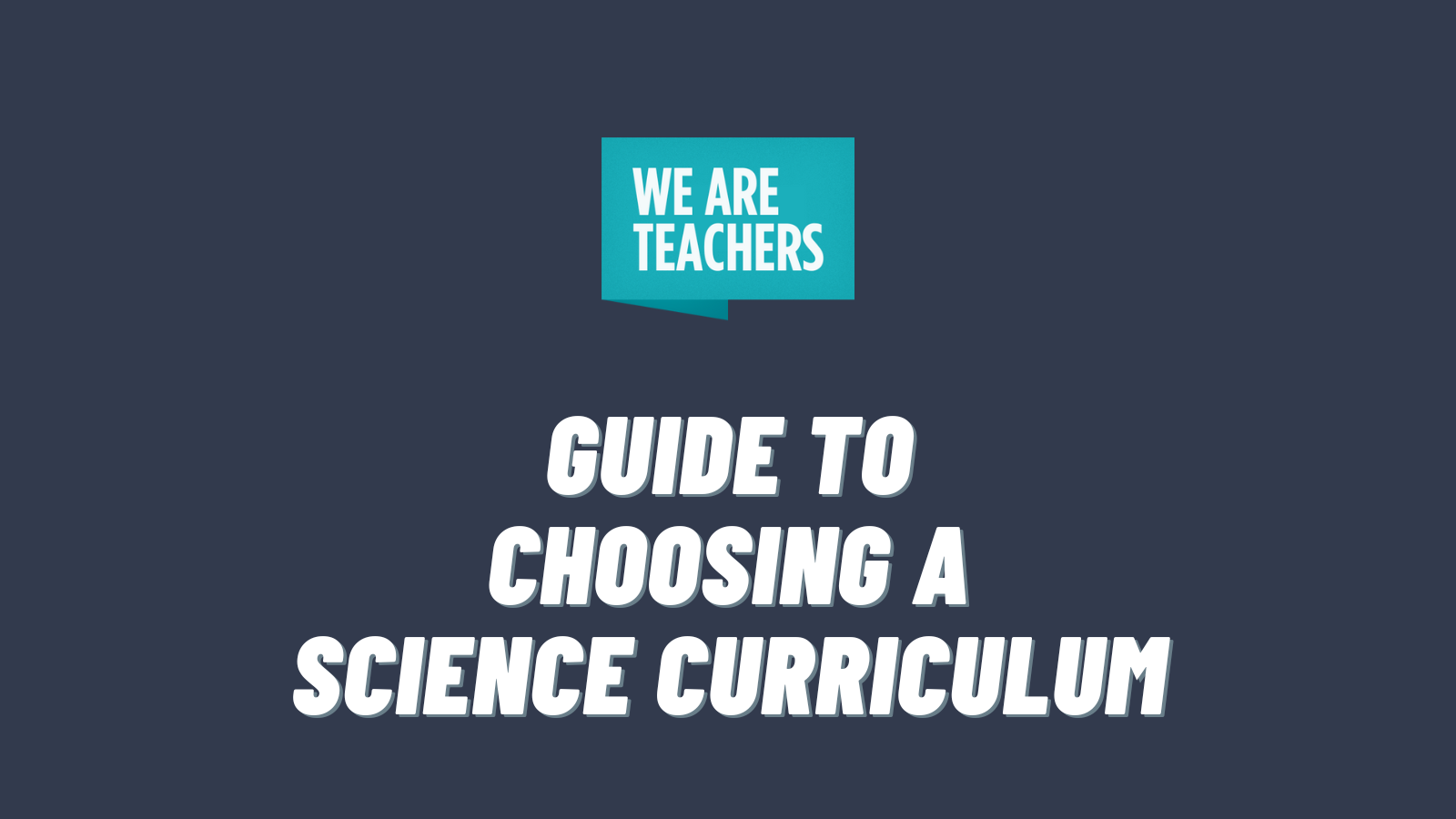We hear it all the time from students: “I’m just not into science” or “I’m more of an English student.” There’s an understandable fear that often stems from a misunderstanding of science. However, in the hands of a committed and caring teacher who has access to a strong science curriculum, students become curious, an essential part of the scientific process. Once students are curious, teachers can harness that curiosity with a series of steps to uncover information that excites students and helps them gain valuable insight and skills.
Science Curriculum Must-Haves
Whether you’re designing your own science curriculum or deciding which science curriculum to purchase from a publisher, there are several must-haves you should consider.
Focus on Inquiry-Based Learning
Inquiry-based learning strategies are valuable tools for honing student curiosity. Within any given unit, there should be opportunities for students to learn through investigation, experiments, and exploration of real-world phenomena. For example, ending a unit with an inquiry-based project offers students the opportunity to direct their natural curiosity by becoming experts in a particular topic. As the teacher, you help guide the research that students do, suggesting resources for the students if appropriate or checking their sources to make sure they’re reputable. By the end of the unit, the teacher might know a lot about different ecosystems, but Jake is the class expert on desert ecosystems.
Alignment With State Standards
State standards vary, but most states align their standards with the NGSS: Next Generation Science Standards. The varied concepts of NGSS should serve as the guide to help determine which lessons would best serve your students.
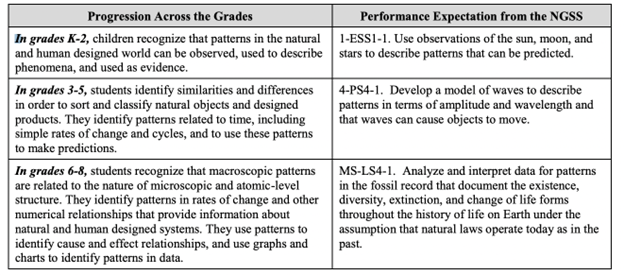
At the elementary school level, teachers should help students:
- Observe phenomena using as many of their senses as possible
- Articulate similarities and differences and connect their observations to prior learning
- Explain patterns that they notice and use evidence to make predictions
- Develop follow-up questions for potential further exploration
In short, teachers introduce their students to the important components that make up the scientific method.
Excellent lessons and units that align with NGSS and are grade-appropriate can be found on the NGSS website.
Emphasis on the Scientific Method
A strong science curriculum provides students with many opportunities to practice the scientific method steps: question, research, hypothesize, experiment, analyze, and share. In fact, the state exams generally do not test for specific content knowledge. They test students’ ability to interpret data in the form of graphs, tables, and images. They also assess students’ ability to make predictions that can be logically supported by the available evidence with observation, explanation, prediction, and asking questions
For example, students might be asked to read graphs showing the amount of carbon emissions over the last 200 years. Then they’ll need to interpret the significance of the information. By learning to describe what they see in the graph and explain the information as clearly as possible, students will be able to answer questions.
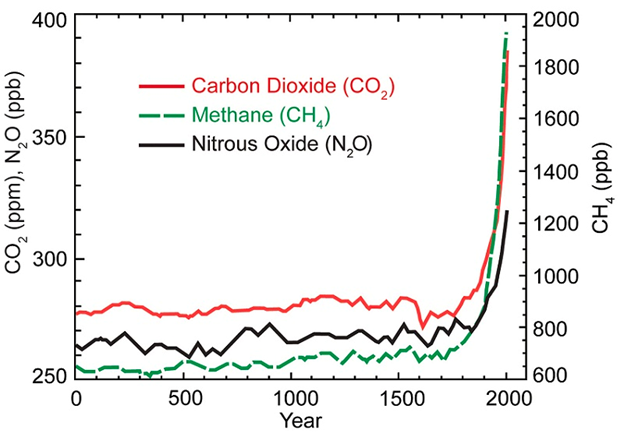
Asking students to examine this image and explain it to their peers will enable them to answer questions that might come from the data and make predictions.
Here are some free printable scientific method classroom posters and a free printable scientific method worksheet.
Focus on Content Knowledge, Vocabulary, and Comprehension
Sometimes students will say “I know what it is but I can’t explain it” when attempting to describe their observations. Unfortunately, if they can’t quite find the words to articulate what they are noticing, they don’t quite understand it. The goal is not to pepper your explanations with lots of difficult language but to explain ideas as clearly as you can.
Every observable phenomenon can be explained by people of all ages to different levels of precision:
- A kindergartner can explain that frogs are green because they live in green places.
- A 4th grader can explain that frogs are green because the color helps them camouflage themselves from predators.
- A high school or college student can explain that the color offers the best level of fitness for the species given its particular niche.
All of those explanations are correct and appropriate for each student’s given level.
Meet the Needs of Diverse Learners
Students come to your class with different strengths and interests. Some students excel at abstract reasoning while others find greater comfort with interpreting visual information. A strong curriculum allows teachers to differentiate instruction to explain complex phenomena in multiple ways so that all students can grasp the ideas.
One of my favorite ways to get students to observe is to encourage them to draw whatever phenomenon we are exploring and write down what they notice about it next to their drawing. This activity encourages students to pay attention to details and notice things that they wouldn’t normally notice if they only glanced at a picture.
Below is an image I drew of the geometry found within an animal. Students can learn to see the geometric patterns of life at any age.
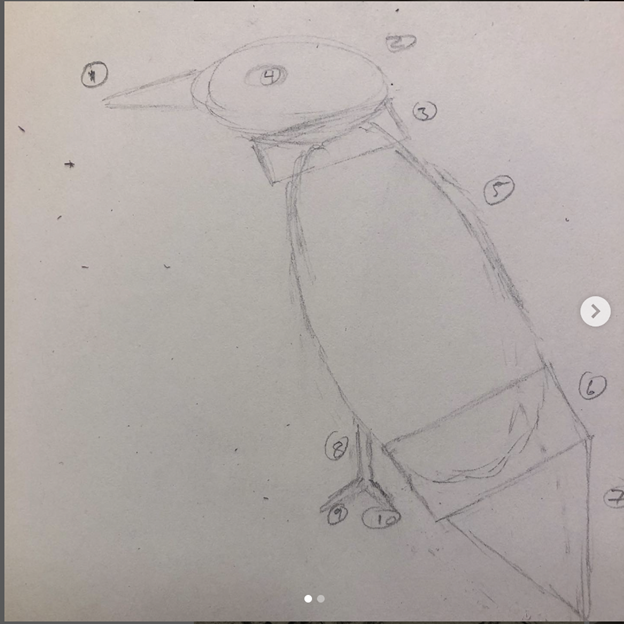
Below is the same image as above refined to capture what I noticed in the bird. By getting the proportions of the bird correct, I was able to then focus on the details of the bird afterward.
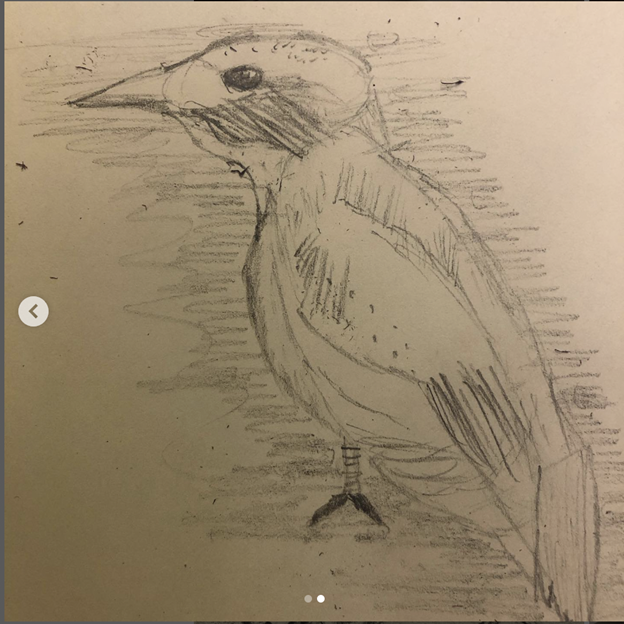
Use of Assessment To Guide Instruction
Assessments in science can be summative and formative, and a strong curriculum provides opportunities for both.
Formative Assessments
We think of formative assessment as generally low-stakes, informal, and student-led observations. Writing their opinion on a subject might be an example of a formative assessment. A student’s science journal can be another excellent source of formative assessment.
Summative Assessments
Depending upon the state you teach in, you may already have some kind of science assessment. The NCES indicates that summative assessment typically begins in 4th or 5th grade for most states.
If you have a summative assessment for your students, it is best to offer students questions that resemble your particular state’s questions. The state education websites will often offer practice exams that you can use to create practice assessments. This helps students understand the types of questions presented on the state exam so they get familiar with answering them.
However, an overemphasis on summative assessments for science class is one of the major contributors to fear around science. Routine, low-stakes quizzes are often beneficial, as they can help get students in the habit of reviewing their notes, while high-stakes tests for science have a potential to create lifelong science fear.
Depth and Breadth of Content
In my 17 years of teaching, I haven’t found a perfect balance between depth of knowledge and breadth of knowledge. It changes each year in response to what I perceive could be improved from the year before.
Especially in younger grades, a strong science curriculum provides foundational knowledge. Throughout elementary school, the science curriculum should build knowledge across scientific disciplines throughout the year, such as biology, chemistry, physics, earth science, and environmental science. There is tremendous value in covering similar concepts every year but in greater depth.
Learning science should begin with phenomena that students can directly observe. Save abstract phenomena for later years when students’ capacity for reasoning and interpreting information increases. Kindergarten through 2nd or 3rd grade should focus on observing and clearly expressing what they observe.
Integration of Technology
Grades 3 to 5 can engage in similar activities as grades K to 2, but at greater levels of rigor. These students can expand their observations and offer greater details and generate hypotheses along with follow-up questions about interrelationships. The higher grades also offer opportunities to include technologies for data collection and data analysis to help simulate phenomena that are less easily observed. PHET Interactive Simulations has examples of free science software for analysis.
Supplemental Materials
Scientific Journals
Every student should have a personal scientific journal. This can be an inexpensive composition notebook that is kept in class. In each science class, students can record their observations. This allows students to keep an accurate record of their discoveries. There is a special pleasure that students get when they look at the progress that they make in terms of their ability to observe and record details, ask interesting questions and notice detailed patterns over time.
Students can draw and observe flowers, for example. Drawing and writing about the colors they notice, the scent of the flowers, and the different geometric shapes that make up the flower can help students pay close attention to what they are observing. Growing seeds in a classroom and drawing the growing plant over weeks and months offers an excellent opportunity for students to observe changes over time.
Science Articles
Scientists are expected to stay up-to-date on developments in their fields of science. Science departments offer weekly seminars where it is expected that people read and share the latest research that might impact their own work. Educators should begin teaching this expectation in elementary school by requiring students to read and share scientific research that is occurring. Teachers can regularly bring in reading-level-appropriate scientific articles to class for students to read, critique, and question. Science articles are an excellent opportunity to expand on student subject expertise as they learn to build their depth and breadth of scientific knowledge. A student who is really interested in astronomy could be asked to read articles and share what they’ve learned with the class. Another student might spend a semester regularly reading articles related to arctic animals. Here’s a list of some of the best science magazines for students.
Science and History
Good scientists are familiar with the history of their discipline, so it is always a good idea for students to learn about the history of discoveries and inventions. These stories can draw students in and help make science exciting for them. Learning about science through the history of science also provides opportunities to highlight scientists who have made important contributions but might not get the kind of credit they deserved through history.
These science histories can align with Black History Month, Hispanic Heritage Month, and Women’s History Month as well. Rosalind Franklin, for example, was responsible for developing the X-Ray Crystallography images that allowed Watson and Crick to deduce the structure of DNA. Her contribution was instrumental in providing the evidence that they needed to figure it out, a story worth sharing as students learn about DNA. Here’s a list of famous scientists everyone should know and wonderful women scientists to inspire your students.
Graphs and Images
Other materials include important graphs and images developed over time. Opportunities to record data over time and represent it visually, for example, taking a daily temperature reading outside and recording the temperature graphically, is an excellent opportunity for students to observe weather patterns.
Curriculum Tools for Educators
Lab Equipment and Safety
The kinds of labs you can do in a classroom will be heavily dependent upon having, for example, a sink in your classroom. Here’s everything that you could want or need to equip a cutting-edge science lab for your class.
Temper the excitement of hands-on lab work with clear expectations of behavior during lab activities. When you introduce students to engaging in lab activities, you should begin the school year with a lecture on laboratory safety. Lab rules should be clearly printed in the classroom and directly taught as an independent lab session. Here’s a free printable set of lab safety rules posters.
Field Trips
Field trips are an excellent opportunity for students to sketch and write observations. If you go to a zoo or botanical garden, students can create beautiful pages documenting what they notice alongside their writing.
But field trips are difficult to arrange. Fortunately, there are wonderful opportunities for virtual science field trips that still allow students to engage in the kind of observational field work that pioneers like primatologist and anthropologist Jane Goodall did without leaving the classroom.
Instructional Time
Excellent science instruction will spend as much time as allows having students observe, record, and explain phenomena. Teachers can explain the hidden details of the phenomena after students have observed them on their own. This pattern helps to reinforce student learning. They observe phenomena and explain it as best they can, and then a teacher can offer appropriate background and reinforcement. Throughout the course of the school year, the level of detail of students’ observations and pattern recognition should improve and increase in terms of level of detail.
Professional Development
One of the joys of teaching is that there is always an opportunity to learn and expand your knowledge and craft. To the extent possible, teachers should be encouraged to continue to deepen their scientific knowledge with an emphasis on learning to explain complex phenomena at the appropriate level. Book clubs with other teachers reading about science and science history can make professional development fun.
Science Curriculum Red Flags
There are also some red flags to look for when designing your own curriculum or purchasing a science curriculum from a publisher.
Don’t Emphasize Rote Memorization
Science includes a tremendous amount of vocabulary. Students should learn vocabulary and learn to use it appropriately. However, the goal is not to memorize technical vocabulary—it is for students to successfully explain concepts in a way that the student understands and can convey to others.
Don’t Focus on Abstract Concepts Before Students Are Ready
Science that can’t be directly observed is a challenge for students of all ages. Asking students to imagine behavior of things that they can’t see requires students to take the teacher’s word for it. Great emphasis on the importance of DNA, while an important part of understanding life, will require students to abstractly reason what is happening inside of a cell that they will not be able to directly observe. This will require the student to take a teacher’s word for what is happening as DNA codes instructions for the cell to synthesize proteins. This is the opposite of scientific training, which is supposed to emphasize direct observation.

